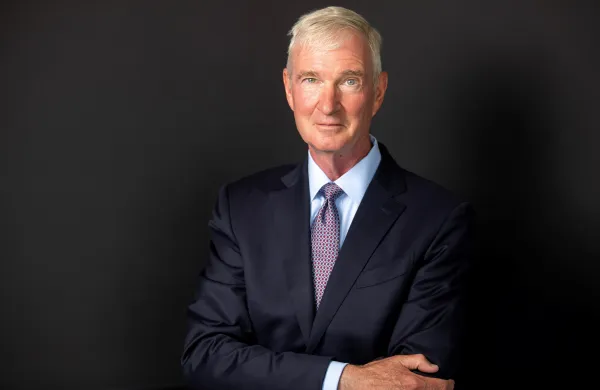Saudi Arabia’s veteran oil minister, Ali al-Naimi, recently hinted that the great game of oil producers’ controlling supply to regulate prices was once more afoot. On February 16 al-Naimi met with his Russian counterpart, Alexander Novak, and reached agreement on an output freeze that also included Venezuela and Qatar (their representatives signed on too). He promised this was “the beginning of a process” that could restore producer leverage in a market that has crashed by 70 percent over the past 20 months. Beleaguered traders seized on the news, bidding up Brent crude oil, the global benchmark, by 7 percent in a day, to about $34.50 a barrel.
A week later, the Saudi octogenarian doused that enthusiasm, pointing out that a freeze wasn’t a cutback and making it clear that the world’s largest exporter had no plans for the latter. “Cutting low-cost production to subsidize higher-cost supplies only delays an inevitable reckoning,” he told a conference in Houston. Brent promptly dropped back below $33 a barrel, dragging global stock markets down with it. Positive economic data in recent days sparked a recovery to just over $37 on March 2.
Whatever tack the Saudis take next, the days when they could hold together a producers’ cartel to regulate world oil prices may be gone — victim of, among other factors, the North American shale revolution and Riyadh’s own multifront proxy war with Iran, its rival in the Organization of the Petroleum Exporting Countries.
OPEC’s collective action has never been perfect or precise, its 13 members always prone to fractiousness and cheating on output quotas. But the group has managed to smooth market cycles at various points over the years. When Brent dipped below $10 in December 1998, in the aftermath of the Asian and Russian financial crises, the cartel coordinated an overall output reduction of 3 million barrels a day by its members and outside producers Mexico and Norway. By September 1999, Brent had rebounded to $22; OPEC managed to keep it within a target band of $22 to $28 until late 2003, notwithstanding the 2000 tech stock crash and the terrorist attacks of September 11, 2001.
That was then, though. Today numerous factors within and without OPEC tilt the odds against a return to such market mastery, analysts say. “Unfortunately for producers, 1998 is a very poor comparison to today,” says Robert McNally, who served as an energy adviser to former president George W. Bush and now runs Rapidan Group, a Washington-based consulting firm.
The demand picture was more benign as the millennium approached. Asian tigers recovered more quickly than expected from their 1997 financial meltdowns, driving a 2.3 percent rise in global petroleum consumption in 1999, according to the U.S. Energy Information Administration. The EIA expects 1.2 percent growth this year, with a slight acceleration to 1.5 percent in 2017.
The petrostates’ real conundrum is on the supply side, however, particularly the shale fields that have added nearly 4 million barrels per day to U.S. production since 2010. Output has tapered by 432,000 bpd since the peak in April 2015, to 9.26 million bpd. But shale’s decentralized structure and relatively low up-front costs mean production could bounce back quickly as soon as prices return to the $50 range, grabbing any market share that OPEC and its allies might yield. “In the past, with conventional production, you could knock out competing projects and have a window of opportunity for a few years,” says Harry Tchilinguirian, global head of commodity markets strategy at BNP Paribas in London. “Shale has changed all that.”
The Middle Eastern countries that dominate OPEC generally enjoy crude production costs much lower than $50. But their “fiscal breakevens,” revenue that states require to meet budgetary obligations, has soared to an average of $100 a barrel, Tchilinguirian estimates. The drivers are swelling populations — Saudi Arabia’s has increased by half since 2000, to 31.5 million, and Iran’s by 20 percent, to 79 million — and social expenditure piled on to stem unrest in the wake of the 2010–’11 Arab Spring.
These huge costs make the oil-rich nations more prone to cling to each barrel of their own output in the hope that someone else will cut first, the BNP Paribas analyst concludes. “Many OPEC countries are at or near capacity now, but that doesn’t mean they have the ability or willingness to forgo production,” he says.
Still more important as a constraint on oil exporters is the all but belligerent relationship between Saudi Arabia and Iran, OPEC’s traditional No. 2 producer. Cooperation between the Gulf neighbors was always testy. Iranian quota-cheating delayed an effective OPEC response by a year during the 1998–’99 market glut, McNally says. Now, however, the two are backing opposite sides in a gruesome multifront sectarian war that stretches from Syria to Yemen: Iran as the captain of Shia Islam, and Saudi Arabia asserting itself as the leader of the Sunni world. Russia, which has emerged over the past decade as the leading non-OPEC exporter, is backing the Iranian side in Syria, complicating its own diplomacy with Riyadh. “For Saudi Arabia, Iran and Russia are mortal enemies,” says Fadel Gheit, senior energy analyst at Oppenheimer & Co. in New York. “Any talks between them are total BS.”
Iran is also determined to regain the million or so barrels of daily production it has lost since 2011, thanks to international sanctions, which were lifted late last year. Analysts expect Tehran to restore half that amount this year, ruling out its participation in any cartelwide output freeze or cutback agreement. Tehran’s oil minister, Bijan Zanganeh, quickly labeled the Saudi-Russian freeze agreement as “very ridiculous.” He told official Iranian media, “If Iran’s crude oil production falls, it will be overtaken considerably by the neighboring countries.”
Against this background, analysts expect the Saudis to continue their policy of beggaring their neighbors, and everyone else in the oil industry, with full-steam production. Although Riyadh is living well beyond its means with oil at just $35, at the start of the current market slump it had a formidable war chest of $840 billion in reserves, of which it is spending $80 billion to $90 billion a year, Gheit estimates. At that burn rate, the kingdom can outlast most rivals and squeeze out competing supply, or so the thinking goes. “I don’t see any reason for the Saudis to rethink their policy now,” says Antoine Halff, director of the global oil markets research program at Columbia University in New York. “They may rethink it later.”
The presumed impotence of OPEC does not mean oil prices will remain permanently depressed. Analysts expect the market to rebalance in an anarchic fashion as the highest-cost exploration projects are shelved and reinvestment in existing fields dries up. Global capital expenditure for the industry sank by 25 percent last year, Tchilinguirian estimates, and more contraction is expected in 2016 by high-cost producers ranging from Canada’s tar sands to the mountains of Colombia.
Although consumers may enjoy a bit of schadenfreude over the oil lords’ distress, they may miss a strong OPEC before too long — and not only because equity markets seem bent on correlating with crude prices. “There is a danger that prices pop back up from $30 to $100 at some point, without any mechanism to reach an equilibrium price,” says Olivier Jakob, managing director of PetroMatrix, an oil-trading consulting firm in Zug, Switzerland.
Wishing for some regulatory force in energy markets will not restore it, though. Investors should prepare for more wild rides.





